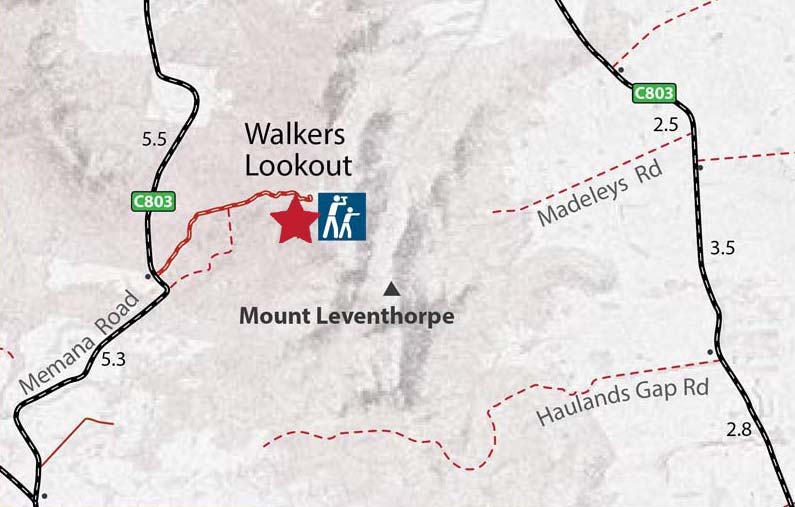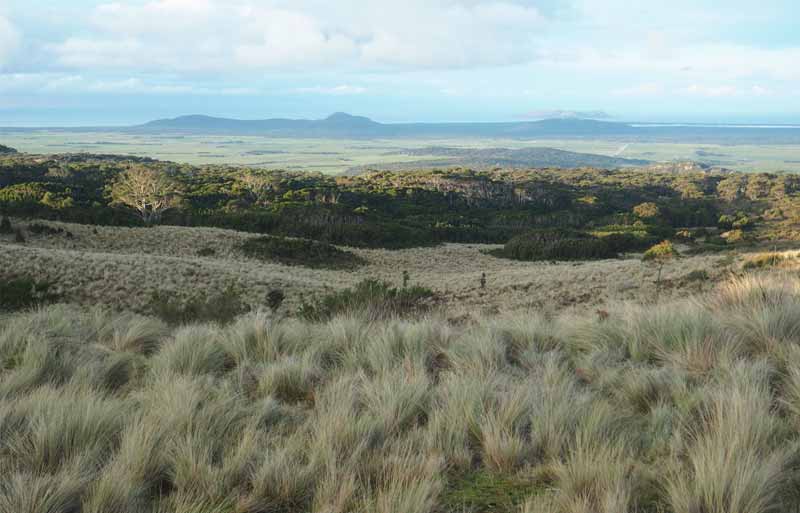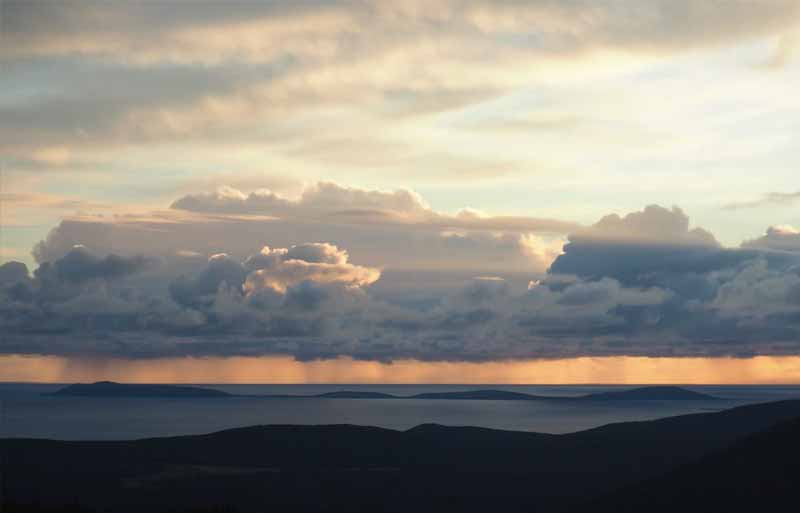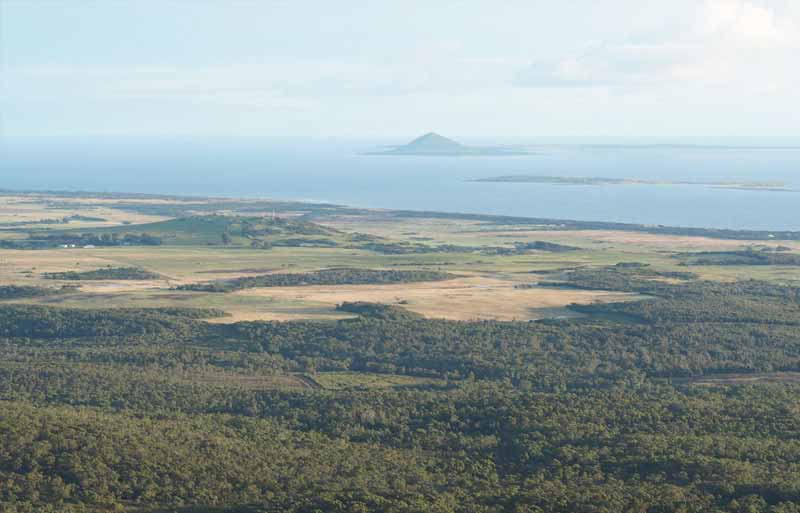
The ragged skyline of the Darling Range can be seen from most parts of the island. The rocky summits of Mt Leventhorpe, Counsels Peak and the Matterhorn-like Pillingers Peak are all composed of granite, which intruded deep in the Earth’s Crust as a hot magma between 400 and 380 million years ago.
Walkers Lookout is a low hill on the western flank of the Darling Range that provides extensive views over most of the island. Unlike the rest of the Darling Range, Walkers Lookout is composed of sedimentary rocks (Mathinna Beds) that were deposited between 405 to 420 million years ago. The layers of sandstone and siltstone that make up the Mathinna Beds were baked by the heat of the later granite intrusions and are now transformed into quartzite and slate.
Between 200 and 23 million years ago, tectonic forces associated with the separation of Australia and Antarctica and the opening of the Tasman Sea have uplifted and exposed the granite and Mathinna Beds to the Earth’s surface forming the Bassian Rise, a ridge of older rocks that extends across eastern Bass Strait from Tasmania to Wilson Promontory.

View northeast towards The Patriarchs and Babel Island

View east towards Prime Seal Island.

View southwest towards Whitemark, Big Green Island, Mt Chappell Island and Badger Island.
As you admire the superb view from Walkers Lookout, spare a thought on the geological processes that have shaped the Flinders Island we see today.




